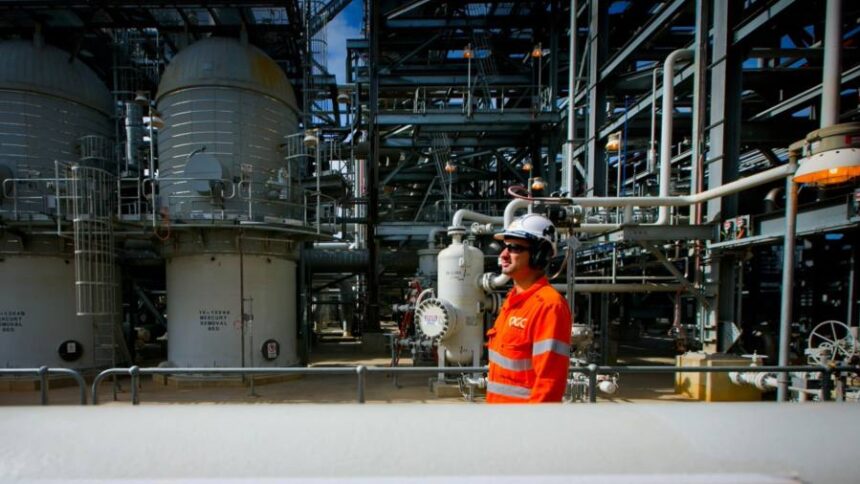Receive free Natural gas updates
We’ll send you a myFT Daily Digest email rounding up the latest Natural gas news every morning.
Two Australian producers of liquefied natural gas held talks with unions on Thursday to try to stave off a strike that could disrupt global supplies.
The prospect of industrial action across three locations in Western Australia sent European natural gas prices up 40 per cent overnight on supply fears. The three sites, owned by Australia’s Woodside Energy and American company Chevron, account for 10 per cent of global supply and half of Australia’s liquefied natural gas output.
In Asia, liquefied petroleum gas futures traded on China’s Dalian Commodity Exchange rose 6.7 per cent to Rmb4,276 ($597) a tonne on Thursday, while crude oil contracts in Shanghai rose 2.5 per cent to almost Rmb640 a barrel.
“Most of that Australian natural gas supply will normally go to Asian buyers,” said Warren Patterson, head of commodities strategy for ING in Singapore. “For Europe, if you see prolonged strike action in Australia you’ll see Asian buyers looking further afield and competing more aggressively with European buyers.”
Unions representing about 700 workers at Woodside and Chevron have applied for “protected action ballot orders”, which give them the right to hold votes on strike action, to Australia’s Fair Work Commission.
One person with direct knowledge of the talks said a move to vote on industrial action would probably take place early next week unless a resolution was agreed.
Talks between the Offshore Alliance union and the two companies continued on Thursday over pay rates, job security and working conditions for offshore gas workers.
Although the talks with Woodside and Chevron are at slightly different stages, industrial action is likely to take place towards the end of August and could carry on for months if not resolved.
A strike at Shell’s Prelude facility in Australia was resolved after 76 days last year at a cost of A$1.5bn ($980mn) in lost production. Union negotiators have pointed to that action as proof that it is not making an empty threat.
Brad Gandy, a spokesperson for the Offshore Alliance, said: “Our members at Woodside and Chevron are fighting for what they deserve, a fair and reasonable agreement, as soon as possible as they are well aware of the hundreds of millions of dollars these companies will lose if protected industrial action slows exports of Australian gas.”
Woodside said it had a range of contingency plans in place to guard against disruptions to supply. “Our team is committed to providing secure energy to local and global customers and security of employment to our people and we remain focused on safe, reliable supply,” it said.
Chevron said: “We will continue to engage our employees and their representatives as we seek outcomes that are in the interests of both employees and the company.”
Industrial action in Australia has become more pronounced in a range of sectors, including retail and the public sector, since the Labor government was elected last year. Pressure for wage increases has been driven by a cost of living crisis and rising interest rates.
The significance of LNG to Australia’s export economy has become more pronounced since Russia’s invasion of Ukraine last year sent prices higher. LNG generated more than A$90bn in revenue in 2022, according to the consultant EnergyQuest, and has helped to deliver an economic surplus. Japan and South Korea are among the biggest consumers of Australian natural gas.
Saul Kavonic, an energy analyst, said he expected the situation to be resolved in the short term. “Unions are supported by Labor. But if the matter escalates further, then governments in Europe and Asia will call on the Australian government to resolve it,” he said.








